

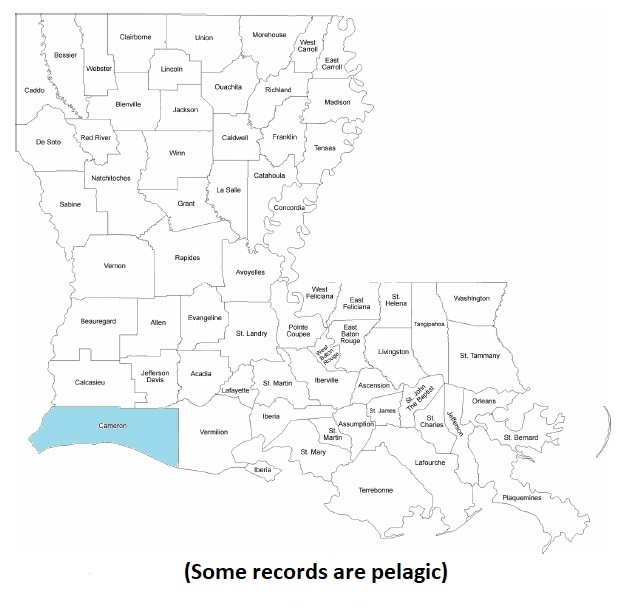

One female in second alternate "intermediate morph" plumage (90-106) on 28 May 1990, Gulf of Mexico: approx. 15-17 mi. S mouth of South Pass of the Mississippi River; Steven W. Cardiff (LSUMZ 139592) and Donna L . Dittmann (*) (AB44 (3):441). This is the second Louisiana record.
One subadult (2002-003) on 18 May 2002, Cameron:
Rutherford Beach, 4 mi. W old mouth Mermentau River;
Donna L.
Dittmann (sketch) and Steven W. Cardiff. This becomes the
third accepted state occurrence, but an earlier record is pending rereview.
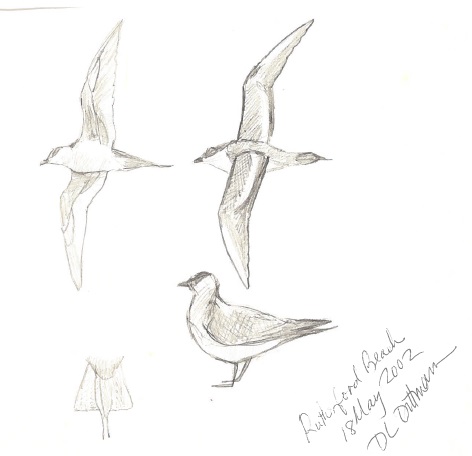
Sketches by Donna L.
Dittmann
One 1st year (2002-47) on 29 May 2002, Gulf of Mexico: approximately 51 mi. ESE of mouth South Pass of Mississippi River, 28o36'04.1"N, 88o25'07.1"W; Steven W. Cardiff and B. Mac Myers III (LSUMZ 173465), Donna L. Dittmann (*); NAB56(3):316. This is the third accepted record and specimen for the state.
One juvenile (2016-023) on 10 September 2016, Gulf of Mexico: 19 mi. SE South Pass Mississippi
River, N28.80º, W88.93º;
Joan Garvey (ph),
Robert C. Dobbs (ph)
, and
Oscar Johnson (ph).
This is the
fourth Louisiana occurrence.
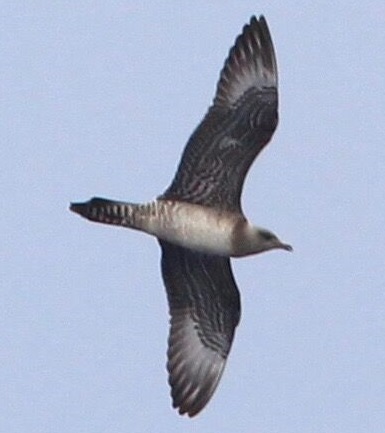
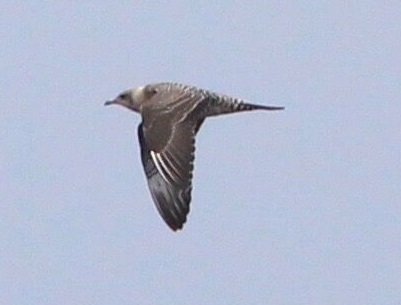
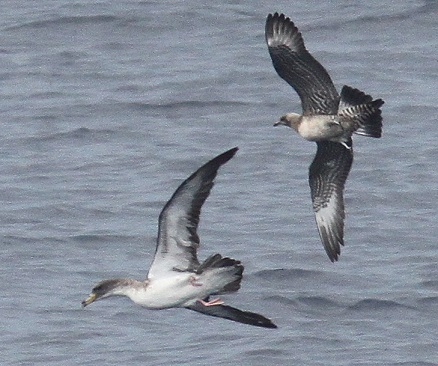
Photos by Oscar Johnson (1, 2) and Joan Garvey (3)
One in Juvenal plumage (2017-038) on 2 September 2017,
Gulf of Mexico: approx. 36 mi. SE mouth of South Pass of Mississippi
River, N28.5317 o, W88.8374o;
Larry R. Raymond
(ph), and
Paul E. Conover (ph). Additional materials:
Hal Mitchell (ph).
This is only the fifth or sixth accepted state occurrence (see above).
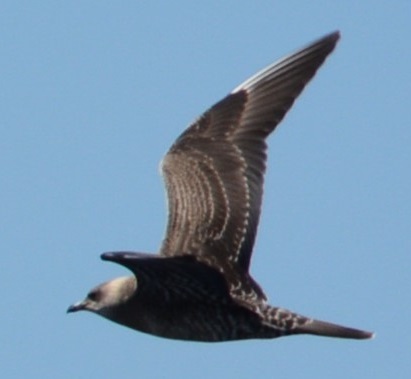
Photo by Larry Raymond
One in Juvenal plumage (1992-079) on 27 August 1992, Iberville: 3.7 mi. N St. Gabriel, 545 Pecan Dr. This bird was seen the day after Hurricane Andrew made landfall in Louisiana. Although the description was fairly convincing for this species, the observation was very brief. Given the difficulty of immature jaeger identification, and in the absence of hard-evidence for what would have been just the third Louisiana occurrence (and first from fall and from inland), nearly all Members agreed that this observation was best left as “jaeger sp.”
One Juvenal plumaged dark morph (1996-088) on 25 August 1996, Washington: 8 mi. W Bush on Bogue Chitto River. This observation was not associated with tropical weather and the bird was observed soaring above the forest. These aspects of the report, plus a generally unconvincing description and lack of hard-evidence, all contributed toward the final decision not to accept.
Two light to intermediate juveniles (2014-114) on 18 September 2014, Caddo: Shreveport, Cross Lake, John M. Ford Regional Park. The observation was hampered by distance and the identification was based almost entirely on “jizz.” The observer was not able to see and count the white rachises on the outer primaries, a field mark that is extremely important to separate Long-tailed from other jaegers. Other plumage details important in ascertaining age were also not described: under wing barring, rump pattern, leg color, etc. All Members ultimately believed that the photographs and description did not support identification of a potential first interior and fourth overall Louisiana occurrence.
One definitive basic or delayed light morph immature (2018-041) on 10 July 2018, Cameron: Holly Beach (N29.7687o, W93.4423o). All Members agreed that, given the difficulties of jaeger identification and that this would be an unprecedented date for a species that has only been documented a few times, it would have been necessary to have photo documentation. The circumstances of the observation were less than optimal, so it’s understandable that the description was subjective and lacks a convincing combination of diagnostic characters.